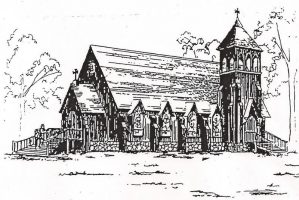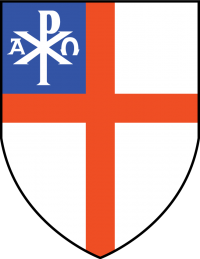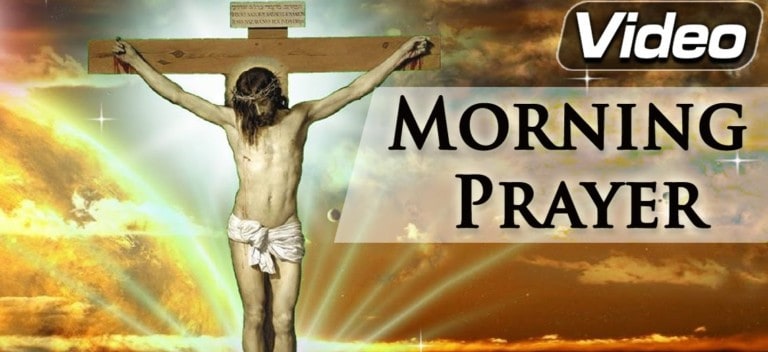Tractate on Customs and Manners
 BEING IN HIS HOUSE
BEING IN HIS HOUSE
A BRIEF SUMMARY OF CHURCH / CUSTOMS AND MANNERS
The Rev’d. Stephan W. Heimann
The Very Rev’d Richard E Bakley
A Liturgical Church
The Anglican church is a liturgical church, which means that we use a set order of worship, along with certain symbols and worship aids to enhance congregational participation in the worship of God.
In order to be full participants in the liturgical worship of God, and to offer Him the honor and praiseworthy of His Majesty and Love, we need to become more familiar with the signs, symbols, customs, and just plain “good manners” associated with being in and worshipping in His House.
Coming Before His Presence
The prophet Habakkuk wrote, “The LORD is in His holy Temple; let all the earth keep silence before Him” (2:20). It was clear to the people of the Old Testament that coming into the Tabernacle (in the wilderness wanderings) or the Temple of God (in Jerusalem) was entering into a very special place, where God was present, and where honor and worship were paid to Him. They entered into the holy place with silence, awe, and devotion.
In a Liturgical church, the very layout of the church, along with its furnishings, tells us that this is a different kind of place than any other we might encounter in ordinary life. Furnishings are quite different, and the entire area gives an aura of a place specially set aside and consecrated to His worship and service.
It is important, therefore, that we enter the church in a spirit of silent reverence and awe, knowing that we are immediately in the presence of God. Talking of any kind should be at a minimum, from the very moment we step inside the door. Not only should we show respect and reverence to God, present in His house, but also to other worshippers who will be praying and preparing for worship. Therefore, even when outside the nave area (where pews are), it is wise and good manners to refrain from loud talking and making any kind of unnecessary noise.
Holy Water
In many of our churches, there are small receptacles at the entrance to the church, which are filled with water. This is water that has been blessed.
It is a beneficial custom to remember our own baptism when we pass by the Holy Water Font. Many people dip their fingers gently into the Holy Water, and make the sign of the Cross (which is discussed later in the pamphlet) upon themselves, thus renewing their Baptismal Promises (cf. BCP 276, 277, 283).
Preparing For Worship
If there is a light burning (known as the Sanctuary Lamp) before the Tabernacle, a wooden or metal container that houses consecrated bread and wine for sick communions, it means that our Lord Jesus Christ is truly present in a very special way. Jesus is always with us, and especially when two or three are gathered in His Name. But, we believe that the bread and the wine, when consecrated, become the Body and Blood of Christ, and remain His Body and Blood, even after the Eucharist is ended.
It is, therefore, proper custom to genuflect before entering the pew. Genuflecting is bowing the right knee to the floor and rising again in one smooth motion. This is an acknowledgment that, contained in the Tabernacle, is the Presence of the Savior “at Whose Name every knee should bow, and every tongue confess that Jesus is Lord, to the glory of God the Father.”
If there is no reserved Sacrament, it is proper to bow the head slightly to reverence the Cross and the Altar. There is no specific power in the Cross itself, we are not idol worshippers. When we see the Cross, however, we are reminded of the price our Lord Jesus Christ paid so that our sins could be forgiven. The bowing of the head expresses our gratitude for His sacrifice and our love for Him.
When you enter the pew, it is proper to spend some time in silent prayer before the service begins. We need to be prepared for worship, and we need to specially prepare to receive Jesus Christ in the Sacrament of His Body and Blood. The Church and/or the priest may provide some prayers of preparation for use when entering the Church. Ask about those, and use them!
Participating In Worship
The worship of the Anglican Church is designed so that all who worship may fully participate in the adoration of God, and of the giving of our lives, without hesitation, to God’s service. There is an activity in the worship, just as there will be lots of activity in our lives, once we leave God’s House.
First of all, and most helpful for us to know, is the attitude or posture of our participation. We KNEEL to pray; we STAND to praise, and we SIT to be instructed. In most Anglican congregations, the Sunday service bulletin will note times to kneel, stand, and sit, but we can follow this general rule and be safe the “lion’s share” of the time.
While the normal posture for prayer is kneeling, there are people who have a leg, back, or knee problems, and for whom kneeling would be difficult, if not impossible. Such people should stand for prayer, preferably in the rear section of the church, so as not to interfere with the view of others. Only if a person is thoroughly infirm is sitting acceptable for prayer.
One of the ways we participate in worship is by making the sign of the Cross. This is one of the earliest types of participation know in the Church, dating back to the very first Christians. It is made by touching the fingers of the right hand to the forehead, to the heart, then to the left, and the right side of the chest. It symbolizes your applying the blessing or prayer to yourself “in the Name of the Father, and of the Son, and of the Holy Ghost” (to our thoughts, desires, and actions).
The proper times to make the sign of the Cross are at the beginning and close of your private prayers; before and after the service begins; at the end of the Nicene Creed; at the Absolution; before receiving each element of the Holy Eucharist; at the end of the Gloria in Excelsis; and at the final blessing.
We also make a special “crossing” at the announcing of the Gospel. Using the thumb, we trace a small cross on our foreheads, lips, and heart. This is asking God to implant the Gospel message in our minds, our speech, and our hearts.
One very important way we participate in the service is by making the responses boldly when responses are called for. We say Amen at the end of all prayers, including the ones the priest says alone. We respond to invitations to pray “and with thy spirit” when the priest calls us to pray. There are other responses and parts of the service which are read in unison, and we should always say those boldly, although certainly without shouting.
Fully participating in the service, as well as observing the proper customs and manners in God’s house will enhance your worship experience and that of others, and give true glory to God “in His Holy Temple.”




